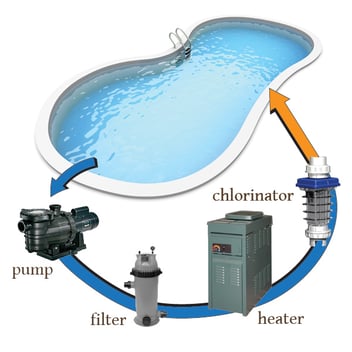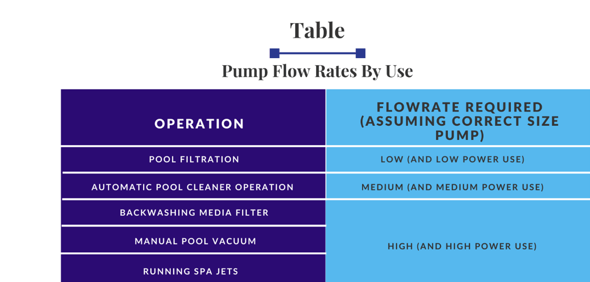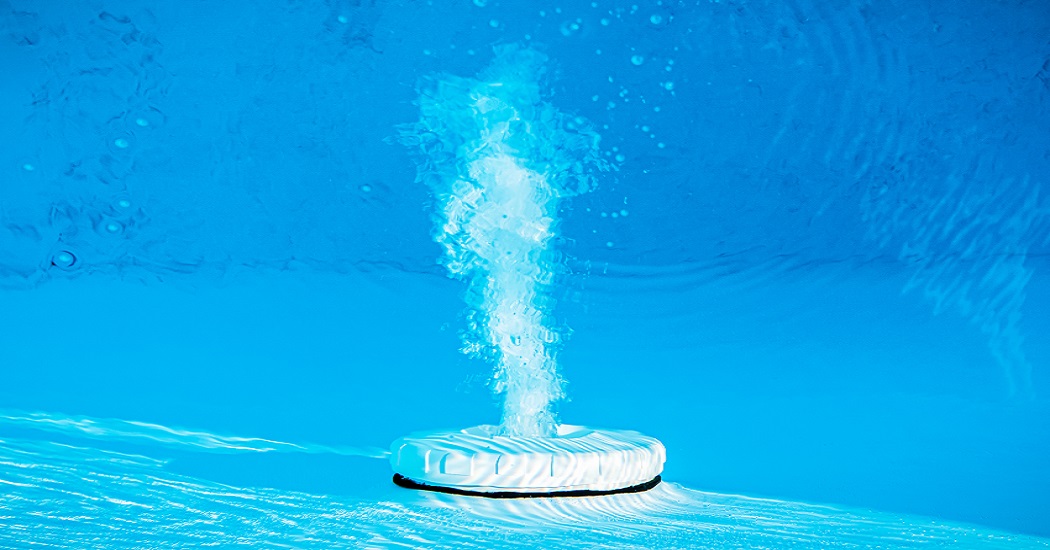What Size Pool Pump Do I Need - 5 Essential Tips
You’re running your undersized pool pump for 10 hours a day, pouring in loads of chemicals and your water is still cloudy (this wasn’t in the brochure you think). Or your oversized pump (bigger is surely better right?) is a bit loud however your water is clear and sparkly so all good. Then small tears roll down your face while staring at an oversized power bill. You might have the wrong size pool pump in both scenarios and many others. Read on for 5 things to consider before buying a pool pump and parting with your hard earned money.
How can you figure out the right size pump when there is a huge range of pump brands, sizes and features that vary in performance, noise, longevity and ease of use? Unfortunately, hope isn’t a good strategy. Particularly when choosing the wrong sized pool pump could mean you end up with:
- Algae and bacteria growth in your pool water
- An electricity bill that makes you cry
- The purr of your noisy pool pump while you’re trying to watch TV, sleep in or enjoy a chill session outside on the deck
- Additional pool maintenance time and the cost of chemicals trying to maintain clear and safe pool water
- Spending more of your hard earned money buying another pump
Why Is Buying The Right Size Pool Pump Important?
Your pool pumps job is to circulate water through your filter to remove any dirt, debris, body oils, hair etc and distribute the chlorine produced by your chlorinator (or ion’s if you have a freshwater system) throughout your pool to keep the water safe and sanitised .

The Basic Concept of Pool Filtration
To work out what size pump is the right fit for your pool and add on features, take on board the following five essential considerations:
1. How Many Litres Per Minute Your Pool Pump Needs To Produce
Your pool pump needs to turnover approximately 1.5 times the volume of your pool water every day to keep your water sanitised, filtered and to meet Australian Standards. So, if you have a 40,000-litre pool (roughly an 8 metre pool), your pump needs to circulate about 60,000 litres of water every day, running for around 8 hours in your swimming season (4 to 6 hours in the non-swimming months).
This next part is for the math nerds (like myself), so skip over it if you like and save your brain some work.
Minimum Litre Per Minute (LPM) Pump Flow Rate Calculation
I’ll break down the calculations so that you can work out what size pool pump you’ll need for basic filtering of your water:
Assuming you have a 40,000 litre pool, you will need to circulate 1.5 times its volume:
40,000 litres *1.5 = 60,000 litres
for 8 hours per day:
60,000 litres / 8 hours = 7,500 litres per hour
Now we convert litres per hour, to litres per minute:
7,500 litres per hour / 60 minutes = 125 litres per minute (LPM) – BOOM!
So, for a 40,000 litre pool you need a pool pump that produces at least 125 LPM.
This is the minimum flow rate you need for basic filtering of your pool. So far so good you say and rush out to buy a 125 LPM pump. Keep the car in the driveway a little longer. There are a few other ingredients in this pool pump pizza we need to add before its ready for delivery.
The Size Of Your Pool Filter
This is super important for two reasons. For your pool filter to work properly, water needs to be pushed through your filter medium (sand, glass or cartridge medium) under pressure. Will 125 LPM tick this box? Sadly, generally no. Backwashing (cleaning the filter using the pool pump) a sand or glass media filter requires between 180LPM and 400LPM depending on your filter size. Cartridge filters generally like to operate between 225 LPM and 500 LPM depending on the size of your filter. Filters are measured by LPM flow rate so always match your filter to the pump size and not the other way round.
Why? If the filter is too small for your pump, you will be replacing your filter a lot earlier than you will like and will void your manufacturers warranty. If the filter is too large for your pool pump, there is not enough water pressure for the filter to remove particles from your water and you will be battling algae, cloudiness and other unpleasant stuff in your water.
Manual vacuum's or suction cleaners need around 200 LPM to sufficiently suck up sand, leaves, debris and other stuff in your pool. Ever tried vacuuming your house with an under powered vacuum? Yep. Same problem with your pool if your pump is too small.
Continuing our example above, assuming you have a media filter (filled with sand or glass) that requires 180 LPM and want to vacuum your pool, you now need a 200 LPM pump. This is where variable speed pumps are well worth looking at as you can select low (daily filtering), medium (water feature) and high speed (backwashing/vacuuming) options. One energy-efficient pump covers all bases. For more info on these types of pumps, check out our blog below.
Spa Jets
Spa jets and massage jets generally require a flow rate of around 400 to 500 LPM. Anything less and they become expensive extra filtration jets without any massaging pressure. If you are considering installing spa jets or massage jets in your pool, you will need a pump that cranks out at least 400 LPM. A lot of customers will install a separate pump for the spa jets (or buy a variable speed pump) as 400 to 500 LPM is miles over what daily filtering requires.
Deck Jets
Deck jets are installed in your deck (rather than the pool) and squirt water from the deck into your pool. It looks super cool, especially when you turn on the LED lights at night.
Deck jets require a low flow rate of about 30 LPM to generate a stream of water approximately 1.5 metres high and about 40 LPM to send the stream of water 2.1 metres high. No matter your pump, you will need a valve to restrict flow rate so you don't turn your deck jets into jet pieces.
Water Bubblers
The flow rate requirements for water bubblers vary depending on how deep in your pool you’re planning on installing them and how high you want the water to uhh “bubble” (I believe the technical term is “plume”). Anywhere from 50mm to 250mm below the waters surface you’ll need 60lpm to 180lpm just for your water bubbler to function.
Water Features
If you are adding in a water feature, your pump will need to push between 50 LPM (300mm wide) up to 400 LPM (2400mm wide) depending on the width of the water blade. This is for each water blade so if you go for three 600mm wide water blades, you will need a pump cranking out 300 LPM.
The following table is a good reference point:
All about as clear as under filtered pool water? Let's sum it up. The first box to tick is to make sure your pool pump has the minimum flow rate required to turn over your pool water each day and ensure your filter works properly. Ticking this box will most likely mean you are pretty close to having a pump big enough to drive a suction cleaner or manual vacuum, although, double check this. Look at that - two boxes ticked just like that!
If you are adding on spa jets, deck jets or water features (or all of them), think about installing a separate pump (unless you have a variable speed pump) to just run these extras. Pool pumps for filtering run every, single day. Spa jets and water features might only be once or twice a week or less and for shorter periods of time. Having a smaller pump for filtering and a larger, less used pump for the extras will save you a bundle in power bills and having multiple flow control valves in your pipework. How much dosh saved? Enough to well and truly offset the cost of the extra pump over a couple of years.
2. The Distance Your Pool Pump Is From The Pool Skimmer Box
What is this skimmer box wizardry you ask? The skimmer box is the opening usually located in the deep end pool wall. It’s where the water is sucked from your pool and pumped through the filtration system.
For most pool pumps, the stated LPM rate assumes a maximum 8m distance from skimmer box to pump. If your pump is 12m from the skimmer box, you will need a bigger pump to compensate for the additional distance the water has to travel from pool to pump. Its like doubling the length of a drinking straw and trying to slurp up a thick shake.
Aside from the skimmer box join and the return into the pump, every 90 degree elbow used in your filtration pipework is the equivalent of adding 5 metres in terms of water pressure loss. If your pump is 8m away and you have two additional 90 degree elbows, the technical pumping distance is now 18m. Try and use 45 degree elbows where possible.
If we take the same 8m (40,000 litre) pool example as above, a 200 LPM pump set up 5m away from the skimmer box will be a peach. Move the same pump 13m away and the pump will be undersized and struggle to draw enough water into your filtration system which is not good at all. It's the filter equivalent of us humans having a shower will low water pressure........no thanks.
3. Is Your Pool Pump Level With The Top Of Your Pool?
Elevation is important for the same reason as distance. If you’re planning on placing your pump under a deck or up a hill, your pool pump will need to do a lot more work to circulate the water from your pool through the filtration system and back again. As a rule of thumb, if the feet of your pool pump is within 300mm of the top of your pool, you will be ok. Above this, you’ll need to upsize to a more powerful pump to compensate.
4. Will The Pool Pump Noise Blow Your Mojo?
Where are you planning on putting your pump? Will it be outside any bedrooms, living rooms or entertaining areas? If you can hear your pump running 8 hours a day, will it be fingernails down the blackboard for you?
Many moons ago, I bought a house where the pool pump was behind the alfresco area. Hearing the relentless noise of the pump running blew my chill out mojo (this is the polite version). What drove me further up the wall was my wife saying “What noise?” If you are cursed as I am, give good thought to where your pump will be running…..for hours….every day…..all year!
Good news though. The type of pump you choose is just as important as the location when it comes to noise.
Single speed pumps are the standard pool pump that comes with most pools. They work great to keep your pool clean however they can be noisy. If you’re sensitive to noise it might be worth while thinking about a different location or an acoustic sound box around the pump (between $600 and $1,200). Or....a variable speed pump (cue readers groaning!). You can set your variable speed pump to the whisper quiet low speed for daily filtering. It’s like the difference between the noise a car engine makes when idling versus driving at 200k’s per hour. Variable speed pumps eliminate worrying about noise when thinking about pump location which is an added bonus to the 85% power saving as well.
For more info on how a single-speed and variable-speed pump works, check out our blog.
5. Is The Pump Australian Manufactured, Australian Assembled or From Overseas? Why Is This Important?
It’s no secret different brands target different price points for different budgets. However, I have learned (through much trial and error) that the old adage “buy cheap, buy twice” is true when it comes to pool equipment. It's nice to think we can get a Rolls Royce pump for a Holden price. I also believe in the Fairy Godmother and Cinderella.
A lot of manufacturers will put an Australian flag on the box hoping a buyer will assume it is manufactured in Australia. These days it is important to look closely at promotional material for equipment as that Aussie flag might mean:
- Australian Owned (Australian owners. Manufactured, assembled and tested offshore, often China)
- Australian Designed (Product designed in Australia. Manufactured, assembled and tested offshore, often China)
- Australian Assembled (Parts are made overseas and imported with the final unit assembled and tested in Australia)
- Australian Made (Parts are predominately made in Australia with the final unit assembled and tested in Australia)
There is a widely known pool equipment brand that was Australian made. When production was moved offshore to a third party Chinese manufacturer, "Proudly Australian Made" disappeared from the box however the Aussie flag remained. The price point of their product didn't reduce with many customers mistakenly believing the product is still Australian made and paying a premium for this benefit.
Premium pool pump brands are made either in Australia, Europe or America from higher quality materials and production processes, reduced failure rates (less warranty claims), last longer and tend be operational quieter. A well-made product will cost more initially but tends to save you long-term money in energy consumption, parts and servicing.
There’s nothing wrong with having a budget and wanting to buy cheaper brands as long as your expectations are reduced and your disappointment kept at bay if the pump fails after the shorter warranty period has expired.
The other aspect is company longevity. How long has the pool equipment company been making equipment for? If it is less than 5 years, there is no guarantee they will still be operating in the future when you need parts or want to claim on warranty, even if it is Australian made. If the product is Australian made, the brand name is stocked in pool shops nationally and they have been around for over 10 years, their equipment will be field tested and will be a good bet with parts available in the future.
Key Takeaway – When it comes to pool pumps, hope isn't a good strategy. Assuming "this size pool needs this size pump" is more hope than anything else. You now know there are many influences on the pool pump that will be the right size for you. If you are talking to a pool builder or a pool equipment shop, tick off the items raised in this blog. If you do that, hope is replaced with confidence. Confidence means more time swimming in your low maintenance, energy efficient pool. That's a win for everyone!
Related Blogs
Installing a pool is a big deal—it’s not just about cooling off on a scorching summer’s day; it’s about creating that ultimate backyard escape where friends and family can make memories for years to....
There’s nothing like stepping into your DIY plunge pool after a long day. You installed it, you love it, and it’s your little slice of paradise. Just like your lawn, your pool isn’t set and forget -....
If your heat pump is running and you’re noticing water at the bottom of the unit or around the unit that you haven’t noticed previously, it is easy to think the worst and assume that your heat pump....
About The Author
My wife and I grew up playing in swimming pools. Our daughters learnt to swim in our backyard fibreglass swimming pool. There is nothing quite like hearing kids splashing about and giggling. As pools do, our pool became a social magnet for friends, family and neighbours which we loved. Helping customers to have their own pool and saving customers thousands on their pool and equipment is the best job in the world.


























